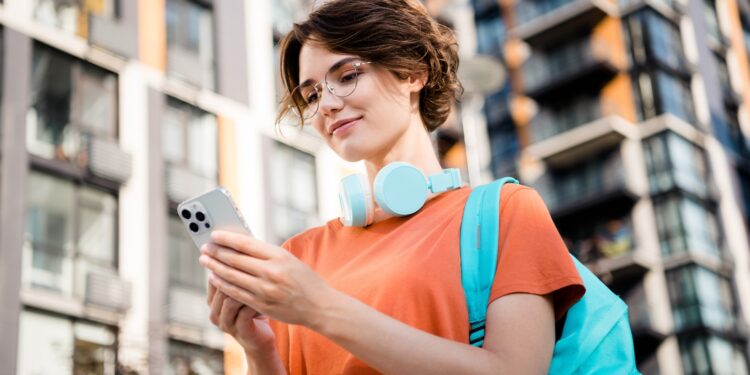Apple introduced an important privacy protection feature with iOS 17. Since then, users have been able to precisely specify which apps can access which photos on the device. This feature has since been further developed and offers more control, transparency, and security. Especially in a time when apps often collect more data than necessary, this feature is becoming increasingly relevant for many.
Photos often contain more information than is apparent at first glance. In addition to the actual image, metadata such as location, date, time, captions, depth information, and even audio content can be stored. If an app gains access to the entire photo album, it may be able to draw conclusions about a user's place of residence, commute, or whereabouts. Apple's new privacy feature makes it possible to specifically restrict such comprehensive access. This puts control back in the user's hands.
Why it makes sense to restrict access to photos
Many apps request access to the photo library, for example, to upload or send an image. What is often overlooked is that once access is granted, the apps have access not only to the images themselves, but also to the associated metadata. This information can reveal where the photo was taken, whether it was taken at home, at the office, or on vacation, and exactly when. Even though most developers handle user data responsibly, the decision about which app can see which photos ultimately rests with the user. This is precisely where Apple's feature, available since iOS 17, comes in.
How the new setting works on iOS
Apple has made access to photos much clearer in the "Privacy & Security" settings. This section can be found at:
Settings > Privacy & Security > Photos
All apps that have some kind of access to photos are displayed there. Right next to the app name, you can see whether it currently has no, limited, or full access. When an app is selected, four access levels are generally available:
- None: The app has no access to photos. Even if you try to add an image, access remains blocked.
- Only add photos: The app can add images to the media library, for example, save new photos, but has no access to existing photos.
- Restricted access: You can specify exactly which photos or albums an app can see. You can select individual images or entire collections.
- Full access: The app sees all photos and videos in the library. Apple also displays the exact number of items that can be accessed to provide a better understanding of the scope.
Important: Which of these four options are available also depends on how the app developer has programmed access. Some apps don't support all options.

Alternative option: Adjust settings directly in the app management
In addition to the central menu under "Privacy & Security," you can also change the settings directly in the respective app configuration. Here's how:
- Settings > [App name] > Photos: The same four options appear there. This method is especially useful if you only want to adjust something for a specific app without scrolling through the entire list.
Data protection starts with the photos
The detailed photo permissions in iOS 17 and later versions are an effective step toward data protection. Apple thus offers the ability to specifically manage access to private content. It's particularly important that access can be restricted not only to the photos themselves, but also to their invisible accompanying information. Regularly checking which app has which permissions not only protects your privacy but also ensures responsible use of your iPhone's features. The best products for you: Our Amazon Storefront offers a wide selection of accessories, including those for HomeKit. (Image: Shutterstock / Roman Samborskyi)
- Make the most of iPhone screen time – 7 effective tips
- Optimize iPhone battery health: 7 tips to save battery life
- Extend iPhone battery life: These 7 tips help immediately
- Using iPhone Accessibility Features: 7 Features at a Glance
- Apple Intelligence: From which iPhone is it available?
- iPhone & Co.: How to deactivate the advanced visual search
- Extend iPhone battery life: These 7 tips help immediately
- Editing iPhone RAW photos – 8 simple pro tips
- iPhone & Co.: How to deactivate the advanced visual search
- Extend iPhone battery life: These 7 tips help immediately
- Apple Music in iOS 26: Music Pins make access easier
- Setting up iPhone widgets: These 6 tricks you need to know
- Set up Apple Pay on your iPhone – quickly and securely
- Why an iPhone? These advantages are convincing in the long term
- Secure your iPhone properly: 5 important functions at a glance
- Save iPhone battery: When is power saving mode worth it?
- Use Apple Wallet safely, conveniently, and efficiently – 7 tips
- LG or Samsung Smart TV? How to disable tracking
FAQ: How to control access to photos
Under Settings > Privacy & Security > Photos, Apple displays all apps with photo access. There, you can set the permissions for each app.
Apple distinguishes four levels: "None," "Add Only," "Limited," and "Full Access." The available options depend on the app.
Apps only see the photos or albums you explicitly share. Everything else remains invisible to the app—including the metadata.
Because photos often contain sensitive data: location, date, audio, and more, Apple warns that apps could use them to create movement profiles.
Yes, if full access is allowed. Apple points out that metadata such as location, depth information, and captions can be intercepted.
Yes. You can also customize access for each app under Settings > [App Name] > Photos – independent of the central menu.
The app cannot view or attach images – even if you want to upload a photo in the app, access remains blocked.
More control, targeted sharing, and protection against data misuse. Users can limit apps to the bare essentials without sacrificing convenience.





